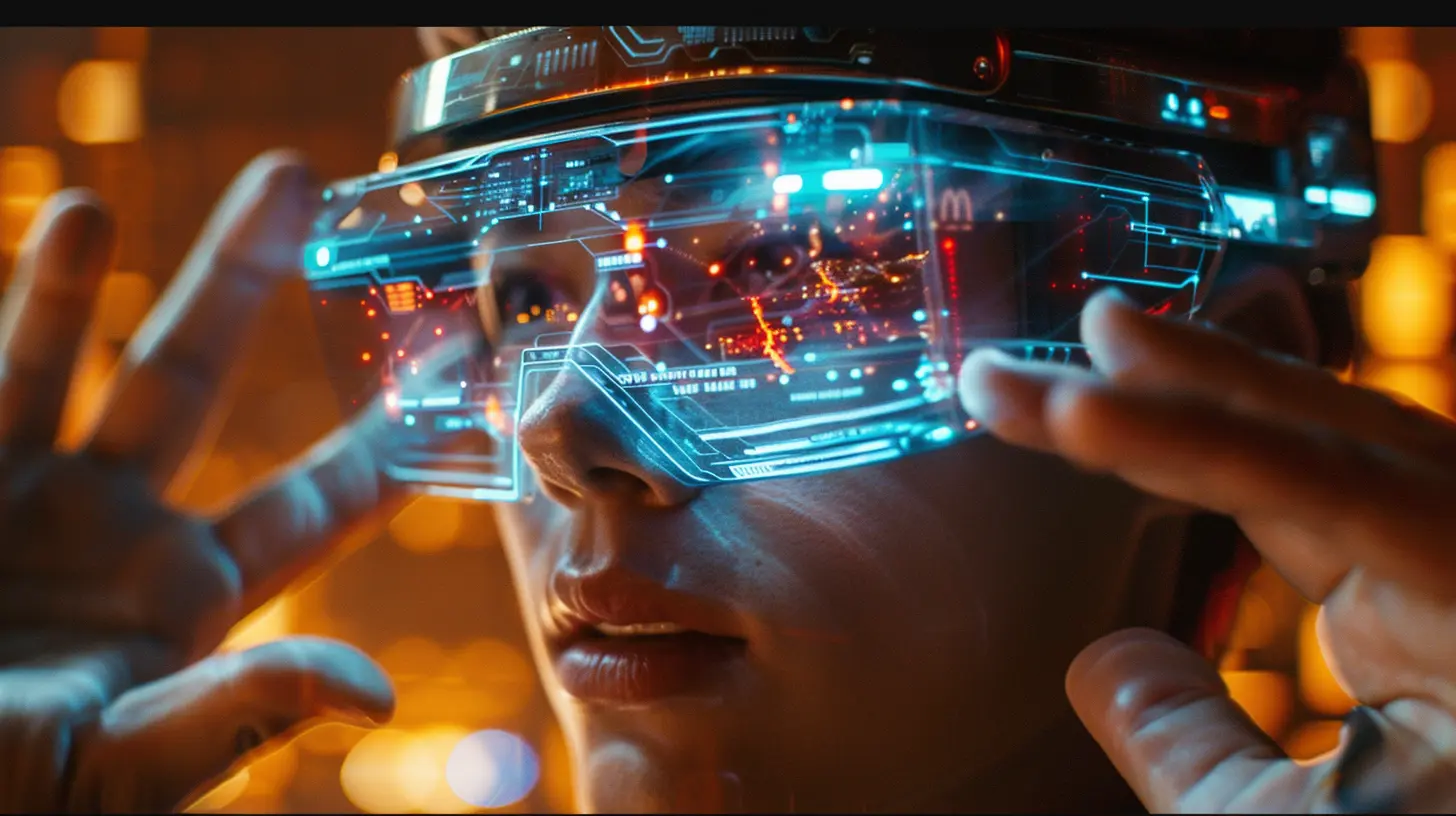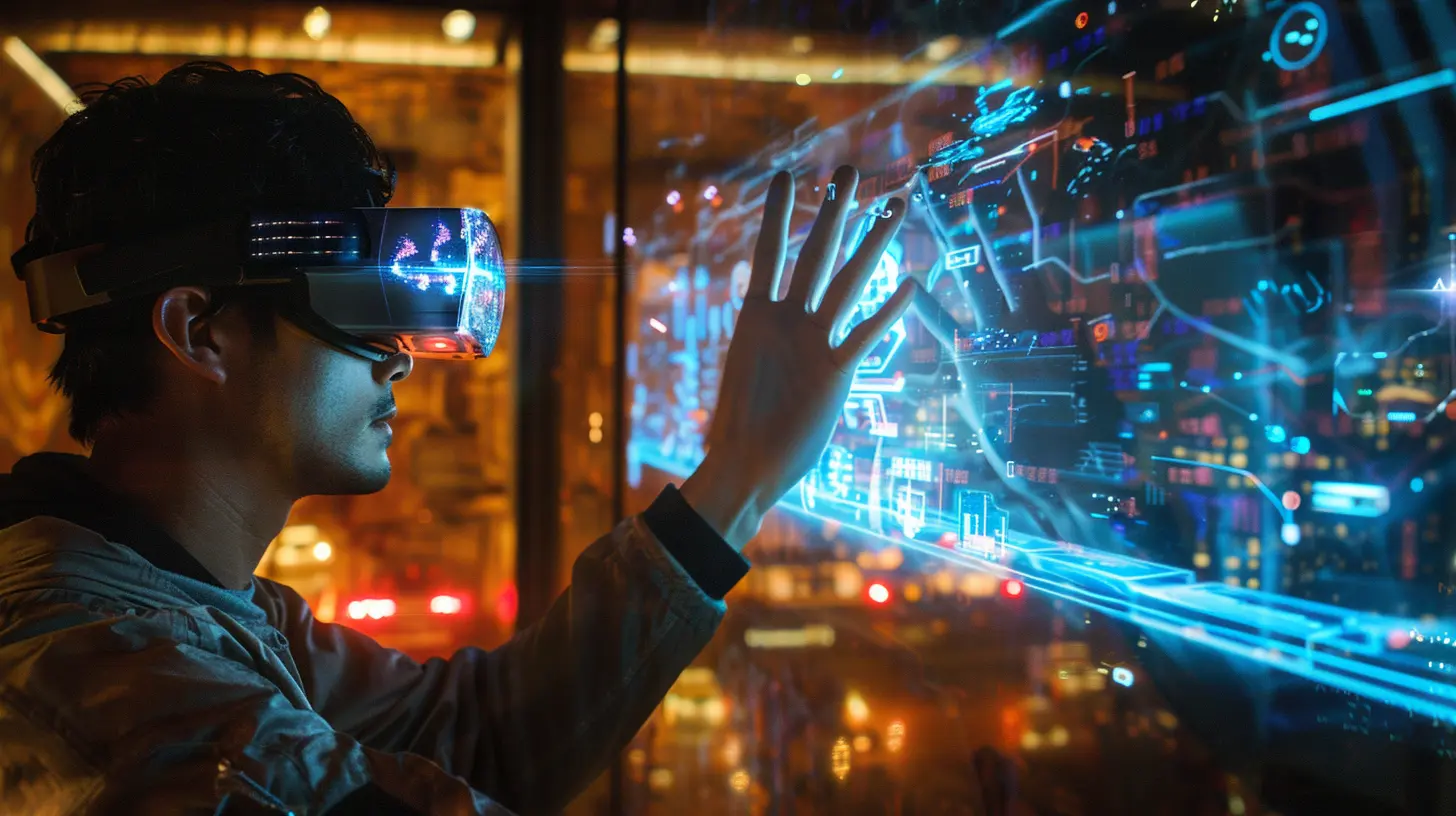Why Holographic Displays Could Be the Future of Entertainment
8 November 2025
Let’s be real—technology is evolving at breakneck speed. We’ve come a long way from black-and-white TVs and chunky monitors. Today? We’re flirting with realities that once lived purely in the pages of sci-fi novels. One of the most jaw-dropping tech breakthroughs on the horizon is holographic display technology. Yep, we’re talking full-on 3D images floating in mid-air, Star Wars-style.
But here’s the kicker—holographic displays aren’t just for show anymore. They’re steadily creeping into the real world, shaking up the entertainment industry in ways we couldn’t have imagined a decade ago. So, let’s break it down. Why are holographic displays being hailed as the future of entertainment? And most importantly—should you be excited?

What Exactly Is a Holographic Display?
First things first. Let’s clear up the confusion.A holographic display is not just some fancy 3D effect you get with special glasses. It actually projects light into the air to create a three-dimensional image that you can view from different angles—without any headsets or eyewear. Think Tupac’s infamous "appearance" at Coachella in 2012. That was a taste. But what’s coming next is way more immersive and interactive.
Unlike flat 2D screens, holographic displays give depth to visuals. It’s like the content is alive, floating in your living room. Sounds like magic, right? But it’s science—beautiful, complicated science.

The Power of Immersion
Let’s talk about that buzzword—immersion.If you’ve ever played a VR game or watched a movie in IMAX, you know how powerful immersion can be. Holographic displays take that to the next level. They don't just show you an image; they make you feel like you’re a part of it.
Imagine watching your favorite band perform live... in your living room... with life-sized 3D holograms. Or binge-watching your favorite series with characters that look like they’re standing right in front of you. No screens. No glasses. Just pure, in-your-face immersion.
And let’s not forget gamers. Imagine swinging a sword or casting a spell in a game where the action literally unfolds around you. The line between the digital and physical world? It just vanished.

How Holographic Displays Work
Okay, nerd alert—but this is actually pretty cool.Holographic displays use light diffraction to create three-dimensional images. This means they split light into multiple beams and angles, projecting different views of the same object to different directions. So when you move your head, your perspective changes—just like in real life.
There are different types of holographic displays—light-field displays, volumetric displays, and laser-plasma displays, to name a few. Each comes with its own set of pros and cons. But the key takeaway? They’re all trying to replace flat screens with something that feels tangible and real.

The Entertainment Industry Is Already Hooked
You might think this sounds futuristic, but guess what? It’s already starting to happen.Concerts & Music Events
Remember the Tupac hologram? That was just the beginning. Artists are now experimenting with entire holographic tours. This means a performer could be "on stage" in multiple locations at once, beamed in via hologram. Smaller artists could also join virtual stages without ever leaving home. Talk about expanding your audience.Movies & TVs
Holographic displays could revolutionize how we watch movies and TV shows. Instead of being limited to a screen, imagine narrative elements unfolding around your living space. Directors could design scenes that take over your room. Think of it as surround sound—but for your eyes.Gaming
Gamers, buckle up. The possibilities here are endless. Imagine tabletop gaming where your board springs to life. Or open-world games where the geography wraps around your physical space. We’re talking full-body, 360-degree gameplay. No more screen fatigue. Just pure, unfiltered action.Theme Parks & Attractions
Disney, Universal, and other major players are already dabbling in holographic tech to enhance rides and attractions. Think hyper-realistic characters, creatures, and environments popping into existence around visitors—minus the need for clunky VR headsets.Why It’s Better Than VR (For Some Things)
Now, I hear what you’re saying—“Isn’t that what VR is already doing?”Good question. The answer? Sort of.
While VR is amazing for immersion, it has its downsides. You need bulky headsets, there's motion sickness for some, and it can feel isolating. Holographic displays avoid all that. They’re socially inclusive (everyone sees the same hologram), and they don’t require putting something over your face. It’s more natural, more comfortable, and way more communal.
Think of VR like a private trip to another world. Holographic displays, on the other hand, bring that world to everyone in the room.
The Tech Is Catching Up—Fast
We’re not just dreaming here. The tech is catching up quickly.Big tech companies, startups, and universities are investing heavily in making holographic displays commercially viable. Companies like Looking Glass, VividQ, and Light Field Lab are all working on mind-blowing prototypes that suggest it won’t be long before we see this tech become mainstream.
We’re talking about advancements in:
- Display resolution: Crisp, high-def holograms.
- Processing power: Real-time rendering of complex visuals.
- Miniaturization: Smaller, more affordable hardware.
- Content creation tools: Easier ways to make holographic content.
The dots are starting to connect. And where there’s innovation, entertainment isn’t far behind.
Real-World Use Cases You Might See Soon
Wondering when you’ll actually get to experience these things without a tech expo ticket? Here are some real-world possibilities that could hit sooner than you think.- Live sports broadcasting: Watch the game with holographic replays from different angles, right on your living room table.
- Virtual travel: Ever wanted to walk through the streets of Tokyo while lounging in your pajamas? Holographic travel experiences could scratch that itch.
- Interactive storytelling: Children’s books could become holographic adventures, with characters acting out scenes beside them.
- Educational experiences: Learn anatomy with 3D human organs floating in front of you or explore solar systems projected into your classroom.
Challenges on the Horizon
As much as we’re hyped about it, it’s only fair to talk about the hurdles, too.Cost
Holographic display systems aren’t cheap. The technology is still in its infancy, which means early devices come with a hefty price tag. But remember flat-screen TVs when they first came out? Same deal. Prices will drop over time.Content Availability
Having the hardware means nothing without content. Creating holographic media is trickier than regular 2D or even VR content. The good news? Content creators are catching on, and tools are getting better and more accessible.Hardware Limitations
Right now, most holographic displays are a bit bulky and limited in size. We’re not yet projecting life-sized people into mid-air at home—but we’re getting close. Continuous innovation is narrowing the gap.So, Could Holograms Really Be the Future?
Short answer? 100% yes.The entertainment industry thrives on innovation—and nothing screams innovation like 3D interactive visuals floating in the air. The appeal is obvious: greater immersion, shared experiences, and fewer barriers between people and content.
As technology grows cheaper, more compact, and more powerful, expect to see holograms moving from novelty to necessity.
Think about it: from vinyl to streaming, from VHS to 4K, and now from screens to the third dimension. It’s evolution. And holographic displays may just be the next massive leap.
Final Thoughts
Let’s not kid ourselves—holographic displays are like something out of a dream. But it's a dream that’s turning real, and fast. While they’re not quite mainstream yet, they’re gaining serious momentum. In just a few short years, we might look back on our flat screens the way we now look at dial-up internet—quaint, charming, and painfully outdated.So, whether you're a movie buff, a music fanatic, a gamer, or just someone who loves cool tech, keep your eyes peeled. The holographic age of entertainment isn’t just coming—it’s practically knocking on the door.
Are you ready to open it?
all images in this post were generated using AI tools
Category:
Tech NewsAuthor:

Gabriel Sullivan

